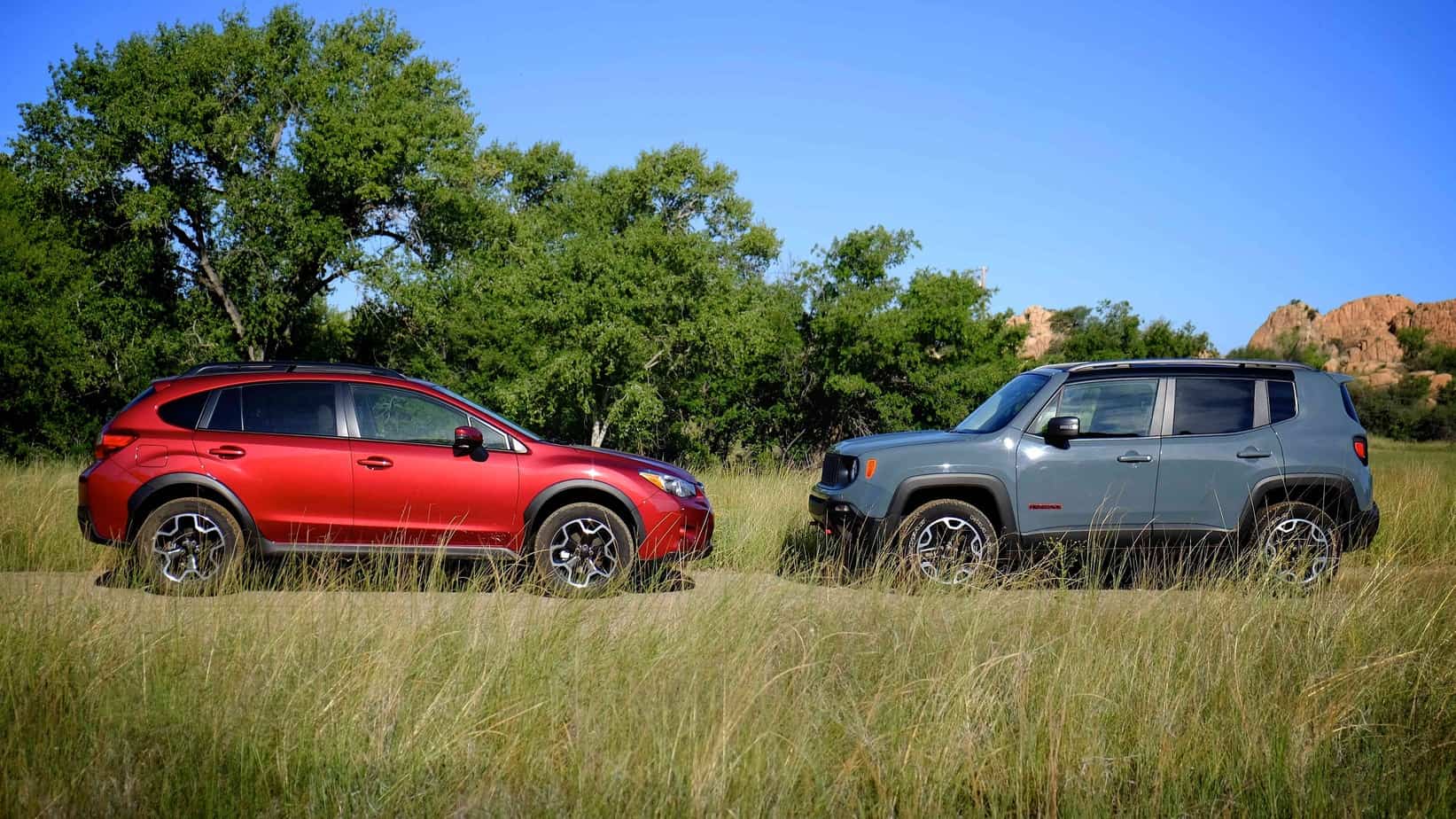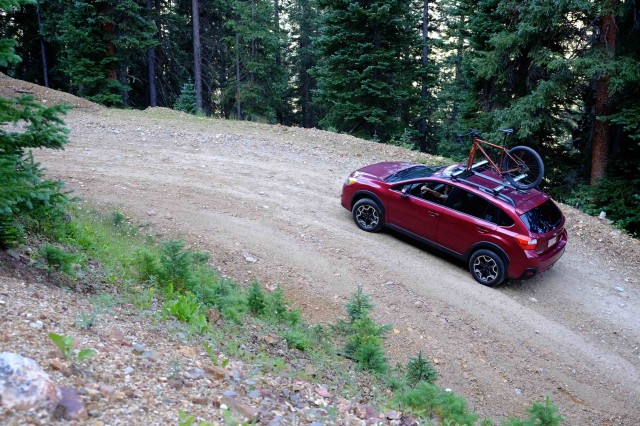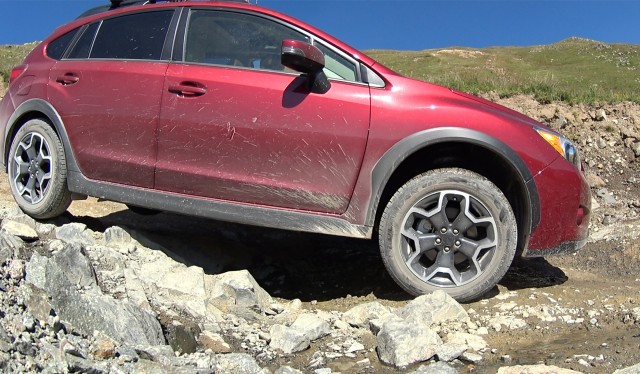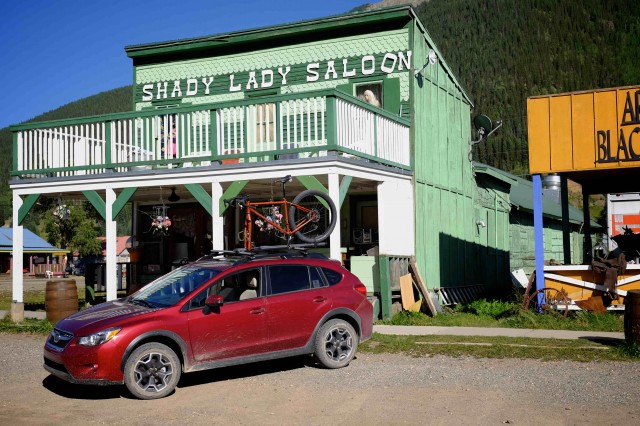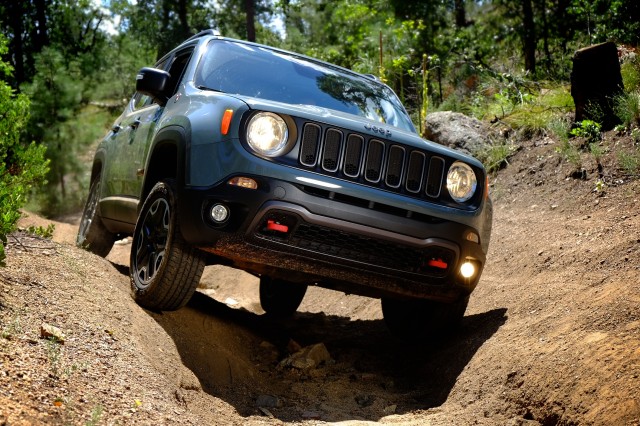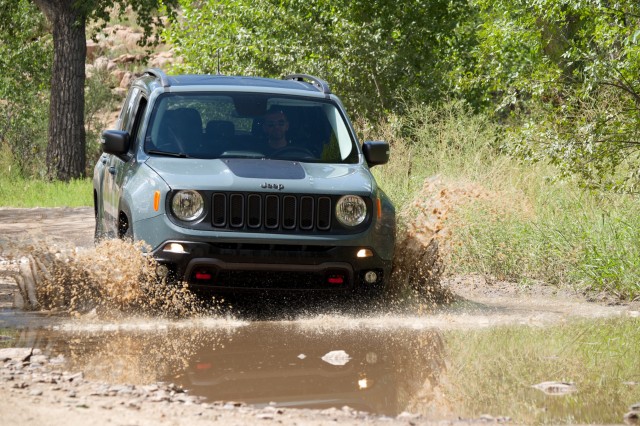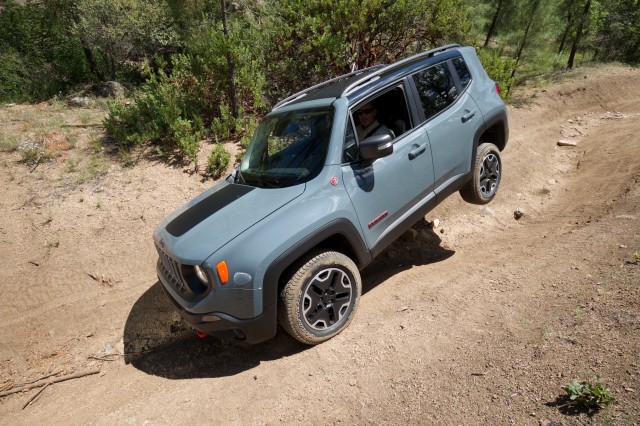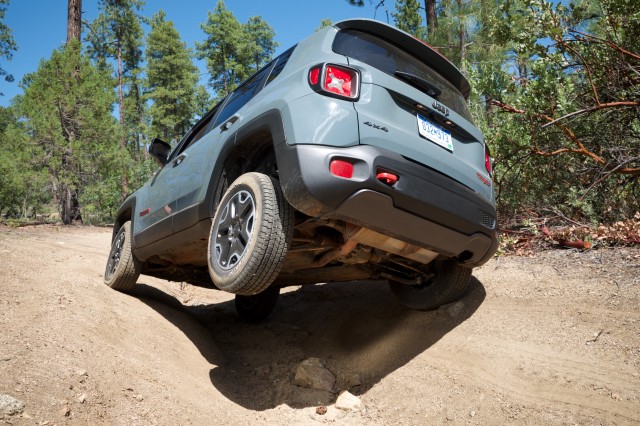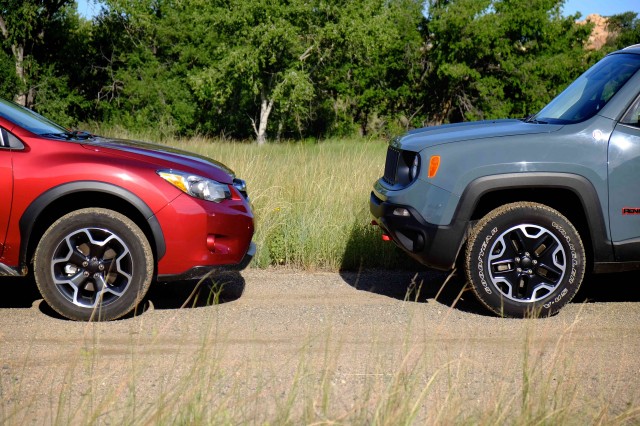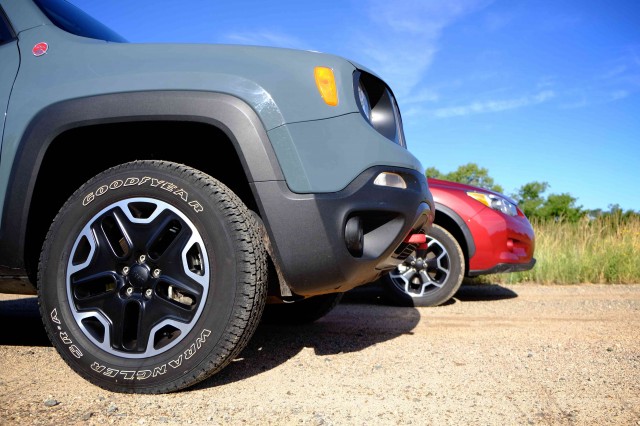If you hadn’t noticed, the world is in a constant state of change. Fight it if you must––you can’t stop it. Within the world of overland travel, the compact SUV and small wagon are becoming increasingly popular. After conducting an informal survey, I have learned that many of theses small vehicles reside in garages right next to a full size, and heavily modified overland truck. Whether serving as daily drivers, or purchased for long distance road trips, the wee overlander is becoming big business.
When the Subaru XV Crosstrek hit the market in 2012, it was well received largely because it delivered what Subaru enthusiasts expected, and more importantly––wanted. On the flip side, when the Renegade was announced early in 2014, it was greeted with a collective gagging sound and screams of protest from tunnel-visioned Jeep loyalist. To those people, many of us simply replied, “get over it.” Small is here to stay, and stay it should. Compact SUVs and crossovers help manufacturers meet fuel efficiency standards and frankly, they fit the needs of many of today’s drivers.
Understanding why they’re here, I set out to see how they perform. My first evaluation of the Subaru XV Crosstrek during a 1,300 mile mixed-terrain outing in the Rockies proved how capable it is. I also admit I became inexplicably smitten by it and foresee a time when one will take up residence in my own garage.
After attending the media launch of the Renegade last winter in California, I concede it also impressed me. So, with a genuine appreciation of the two, it was exciting to put them Head to Head simultaneously. I doubt any other publications have had such an opportunity.
Subaru XV Crosstrek 2.0i
At first blush, the Crosstrek seemed to fill a hole in Subaru’s lineup that didn’t exist. Having driven the entire range of Subarus just this year, I now see exactly how it slots into the mix. Whereas the Outback is a little too road biased, and surprisingly large, the Forester can be a tad pedestrian and borderline, too practical. The Crosstrek offers something more sporty while still retaining classic Suby DNA.
On-road
With a short wheelbase and respectable approach and departure angles, the Crosstrek does admirably well off-road for what it is. Make no mistake, it is very much a car and feels most at home on the tarmac. When pointed down a long stretch of highway or set of twisted mountain curves, the Crosstrek really shines. It is quiet and composed with an interior and driver interface that is undeniably car-like.
While the endemic automotive press is prone to castigate the Crosstrek as feeling cheap and rife with plastic, I tend to think they just like to complain under the auspices of affirming their status as critics. Our Expedition Portal team found the driving experience to be refined, with an interior that Scott Brady said would have been worthy of a BMW just a few years ago. I concur.
If there is a shortcoming to the Crosstrek on the road, it can be attributed to the meager power output conjoined to the uninspiring CVT transmission. I understand why such pairings are necessary, and admit I enjoyed the resulting 37 mpg and near 500 mile range, but the lack of power and confused gear changes are a weak spot, but not a deal breaker.
Off-road
Off-road, the Crosstrek is a fun car to drive. Small enough to wiggle around most trail obstacles, it has tractability proficiencies that many true overland platforms can’t match. The symmetrical drive system, the hallmark of any Subaru, is as sure-footed as any vehicle can be. Whereas suspension articulation is near nonexistent, the ability to get forward motion out of the few tires touching the ground is amazing. If there is one glaring shortcoming to the Crosstrek in challenging terrain, it is not the 8.7-inches of clearance, it is the long and unprotected break-over. Rocky terrain gets a bit nerve wracking with the exposed plastic door sills. The long nose, even with an approach angle better than any other car, is still modest.
The other limitation of the Crosstrek off-road is the absence of a low range. This became an issue when ascending the last mile of Cinnamon and Engineer passes at over 12,000 feet. Steep as they were, they nearly foiled the car’s progress. That’s a highly unique challenge for any car, but worth mentioning.
Overall
Overall, the Crosstrek is a great little car with impressive off-road chops; and I purposefully repeat the word––car. It is more than capable of traversing endless miles of gravel roads with mild obstacles as long as the ruts aren’t too deep, the ledges too severe, or the rocks too big. On roads appropriate to its design, it offers excellent driving comfort and doesn’t feel like it’s being pushed outside its limits.
Jeep Renegade Trailhawk
The Renegade was released this year in three models covering every possible attribute a small SUV buyer would want, including the off-road inspired Trailhawk edition. Featuring a one-inch taller stance than the other models, it also has full-strength tow hooks, some modest skid plating, and modified approach and departure angles for better off-road performance. Most importantly, the Trailhawk is fitted with rear torque-on-demand differentials to compliment the all-wheel-drive system, and a selectable low range with 4.33:1 axle ratios. This accesses the transaxle’s first gear which is otherwise not employed during normal driving scenarios. This virtual low is just that, but as we have learned––it works. All of this is to say, Jeep did not just give lip service to the off-road ambitions of their smallest vehicle.
On-road
On the road the Renegade routinely surprises drivers new to its subtle charms. Many expect it to feel toy-like, even a little cheap and cheesy. To the contrary, it has a refined level of comfort, the appointments are many, and the build quality is solid. It feels like it is more expensive than it is, not that it’s a runaway bargain at nearly $30,000. Seat comfort is excellent, visibility is good, and the interior space feels decidedly cavernous, particularly for the forward occupants. Our first three test drivers were big guys well over 6 feet tall, and all clocked in at a minimum of 200 pounds. They each said the comfort was far better than expected with ample shoulder, leg and head room.
When driving down long highway straights, the Renegade is quiet, poised, and easy to drive. Our hired gun, professional driver, Joe Bacal, noted that the suspension tends to follow every undulation in the road, but was otherwise positive. He too was immediately impressed with the road manners of the Renegade.
On mountain roads it has a sporty feel appropriate to its design mission, but don’t expect anything overwhelming from the Tigershark II engine. With just enough power to get the job done on the highway, it could benefit from a few more ponies, if just to liven the driver experience. The 9-speed transmission in the Jeep is no better than the CVT in the Subaru, so I would call that a wash between the two.
Off-road
With a short 101-inch wheel base, superb approach and departure angles, and traction control systems that seem to work better than most, the plucky little Renegade can not only overcome obstacles seemingly way beyond its pay grade, it does it with no drama at all. Like another walk in the park, the Renegade routinely lifts a wheel, makes a few grunting noises, and with the driver’s eyes bulging in disbelief, manages to overcome deep ruts, ledges and things that would otherwise seem impossible. I could continue applauding the engineers at Jeep for their efforts with the Renegade, but I think it would be easy to just sum it up with this:
As is the case for the Crosstrek, there are modest imperfections with the Renegade. Some of them are simple limitations with this category of vehicle. The lack of articulation, the diminutive size of the wheels and tires, and the fact they are really cars, means these vehicles will not conquer every trail. Beyond that, both cars, particularly the Jeep, are underpowered. If there was one thing that nearly stopped the Renegade dead in its tracks, it was producing enough power to overcome steep ledges and rocks. At one point, the solution was to reclaim the 8 hp being used to power the air conditioner. That’s how meager the power supply is, and how little it takes to stymy the car’s forward progress. That said, and to do justice to the vehicle, we were pushing it right up to its very limits, as evidenced by the image below.
Overall
Overall, the Renegade is a great little buggy. With a unique design aesthetic aimed at a younger, urban-based audience, the Renegade is probably too cute for many traditional overlanders. Virtually everyone I have seen slip behind the wheel and spend honest time in it says the same thing, “I like it.” And I believe they genuinely do. But, they all say, “But, I wouldn’t buy one…” Ultimately, I think that’s okay. Jeep is going to likely sell squillions of them as they’ve done with the Cherokee; a product everyone thought was going to be a flop. How wrong they were.
Conclusions
Deciding which is the better car for our Head to Head comparison was tough, and probably a failed effort from the start. The more we dug into these cars, and the more days and weeks we spent putting them to task, the more we realized this is an apple and orange comparison. Both are excellent vehicles and represent their badges admirably.
In short, the Subaru XV Crosstrek 2.0i is the superior road machine. As a road tripper, it devours miles and is surprisingly fun to drive despite its modest power. The comfortable interior paired to the 500 mile range and excellent fuel efficiency makes this my choice if I want to traverse multiple time zones. When faced with a small and technical section of road, it will manage to overcome more obstacles than most drivers will ever dare. The little sucker just goes.
The Renegade, despite being a little kitschy and over-designed, is all business when the going gets––Jeepy. With careful and skilled driving, it will go anywhere a stock Wrangler can go, with perhaps only a few exceptions. In my humble opinion, if you need more off-road aptitude than the Renegade can provide, you probably need a JK, which is readily available for the same price if you elect to omit some options.
Verdict:
The on-road winner is the Subaru Crosstrek. The off-road winner by an equal measure is the Renegade. Both are wonderful machines, small as they are.
Head to Head Numbers
Subaru price as tested: $28,400 Fully loaded at that price with leather, premium sound, and Subaru’s EyeSight system.
Jeep price as tested: $29,800 Delivered with most, but not all options. It did have the removable MySky roof panels.
Subaru wheelbase: 103-inches
Jeep wheelbase: 101-inches
Subaru ground clearance: 8.7-inches
Jeep ground clearance: 8.7-inches
Subaru approach, departure and break over: 18, 28, 22.7
Jeep approach, departure and break over: 30.5, 34.3, 25.7
Subaru MPG as tested over 1,300 miles: 37.8mpg
Jeep MPG as tested over 788 miles: 23.3
Final tester’s notes: If this were a contest between the Subaru XV Crosstrek without the EyeSight system and the non-Trailhawk iteration of the Renegade, I’d take the Subaru every time. Beyond that, with this test behind me, and having spent several days at the wheel of both cars, I can’t see myself as a Renegade owner as much as I like it. If I were 20 years younger and wanted a hip little off-roader, sure. The Crosstrek on the other hand suits my needs for a long-haul road tripper, trailhead transporter, and around town daily driver with superb fuel efficiency. For my particular needs, I’ll take the Suby – Christophe Noel


